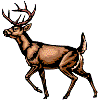Eastern Wildlife Damage Control Conferences
Date of this Version
October 1993
Document Type
Article
Abstract
Human and wildlife conflicts have increased in importance in many suburban areas of the United States. Birds pose a serious hazard to air traffic, and 1,200-1,500 bird strikes are reported to the Federal Aviation Administration (FAA) annually. The location of a landfill near an airport may increase avian activity because landfills provide a food source for omnivorous birds. To reduce avian hazards at airports, FAA Order 5200.5A established a proximity criterion prohibiting the location of any runway used by turbojet aircraft within 3,048 m of a landfill. However, existing landfills within this proximity may be kept open if an acceptable bird management strategy is developed and maintained. The objectives of this study were to: (1) document bird use at Nanticoke Sanitary Landfill; (2) evaluate 3 potential techniques for reducing bird numbers at the landfill; and (3) develop bird management guidelines for the landfill environment. Avian numbers, species, and behavior patterns were monitored at the landfill for 11 months (December 1991 through October 1992) before control activities were initiated. The repellent effects of methyl anthranilate (MA, ReJeXiT®), Posi-shellR (PS) cover material, and pyrotechnics (PT) were evaluated during late October to December 1992. A surface MA application did not reduce avian numbers at the landfill, as birds quicKly learned to tear open plastic refuse bags to obtain untreated food. PS treatment alone did not reduce numbers, as birds were able to forage through the thin surface covering. However, hazing birds with the spray equipment used to apply PS reduced the daily number of gulls (primarily herring gulls, (Larus argentatus) foraging at the landfill by about 50%, from approximately 2,400 to 1,200 birds per day. PT was the most effective treatment, further reducing the gull numbers at the landfill to about 50-60 birds/day. Strategic use of PT to maximize its effectiveness, as part of a consistent bird-harassment program, should cost <$ 10/day for shells during the peak months of bird activity at the landfill (July through January). Interchange of gulls between the landfill and airport was minimal, and has been effectively controlled with PT on a use-as-needed basis.


